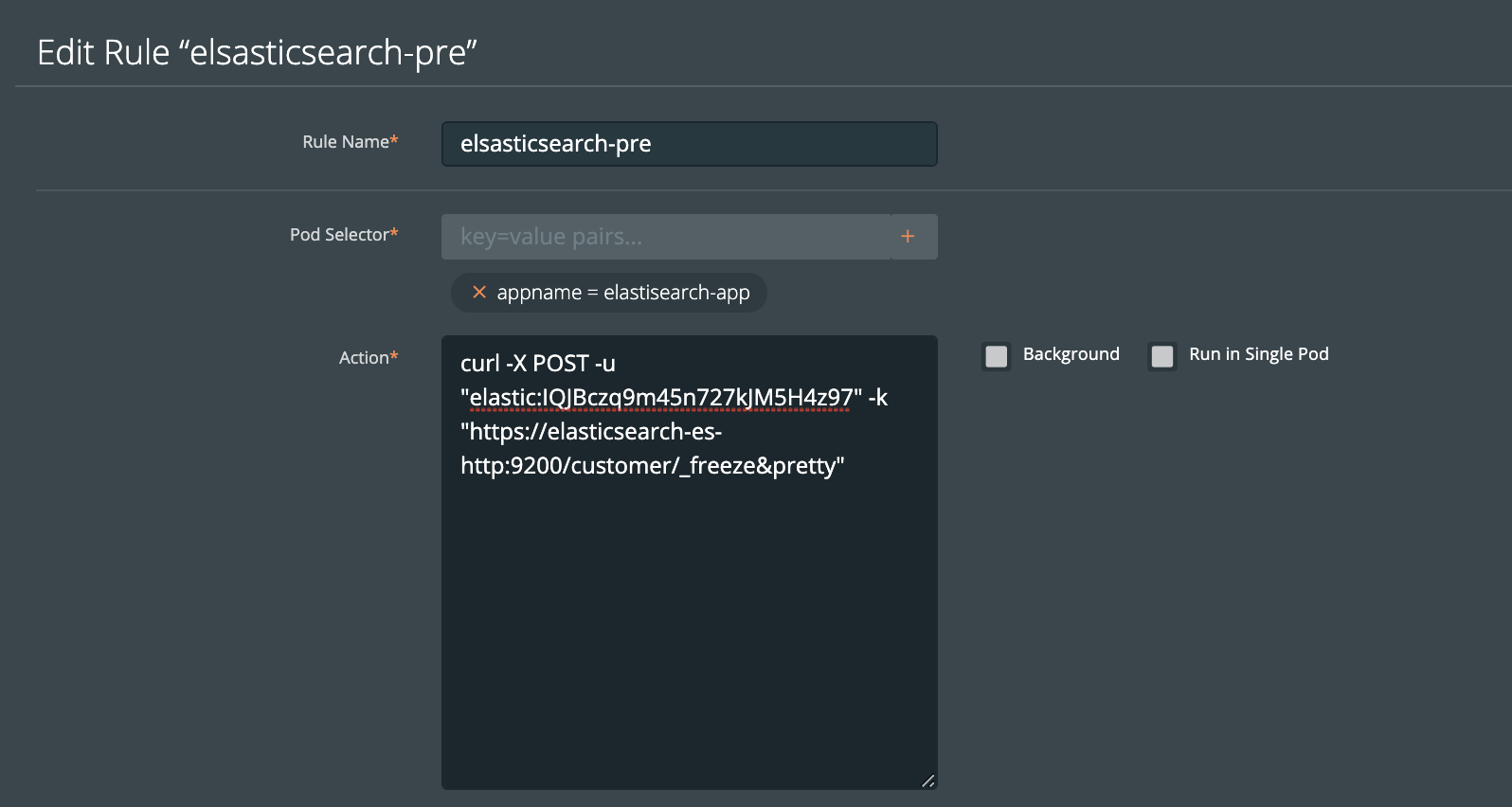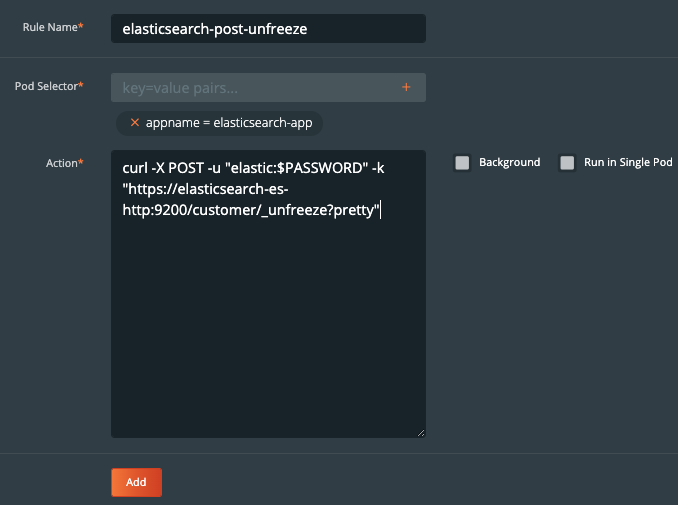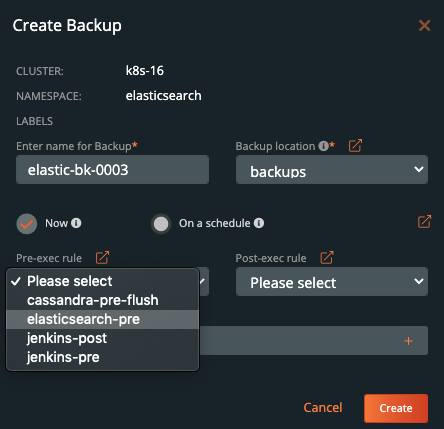Backup Elasticsearch on Kubernetes
You can use the instructions on this page to create pre and post backup rules with PX-Backup, which take application-consistent backups for Elasticsearch on Kubernetes in production.
The Elasticsearch data directory is used prevent permanent data loss and is typically located at /user/share/elasticsearch/data inside the Kubernetes pod. This will also enable PX-Backup to backup and restore the data stored in this location.
Before using this guide, make sure and configure PVCs for elasticsearch-data. Use the below file as an example.
apiVersion: elasticsearch.k8s.elastic.co/v1
kind: Elasticsearch
metadata:
name: elasticsearch
spec:
version: 7.8.0
nodeSets:
- name: default
count: 3
podTemplate:
metadata:
labels:
appname: "elastisearch-app"
spec:
containers:
- name: elasticsearch
volumeMounts:
- name: elasticsearch-backups
mountPath: /usr/share/elasticsearch/backups
volumes:
- name: elasticsearch-backups
persistentVolumeClaim:
claimName: elasticsearch-backups
volumeClaimTemplates:
- metadata:
name: elasticsearch-data
spec:
accessModes:
- ReadWriteOnce
resources:
requests:
storage: 5Gi
storageClassName: elastic-pwx-storage-class
config:
node.master: true
node.data: true
node.ingest: true
node.store.allow_mmap: false
path.repo: ["/usr/share/elasticsearch/backups"]Elasticsearch can also create a snapshot repository to store index snapshots produced by the internal snapshot and restore API. For this, the above template uses a Portworx shared volume and named elasticsearch-backups to create a shared file-system across all Elasticsearch nodes to be used to store the index snapshots.
Installation
Prerequisites
If you have not used Portworx, PX-Backup, or run Data services on Kubernetes it is a good idea to review the following information:
- Install Portworx on Kubernetes
- Application installation
- Install PX-backup
- Add cluster to PX-Backup
- Creating backup rules
NOTE:
- The templat above can not be used alone. Please follow pre-requisites from the following elastic on kubernetes operations guide.
- The rules below will use a user name
elasticand password specific to the environment. You will need to modify the rule to use your user name and password for your environment. - You should mount a PVC to the elasticsearch data directory. This is typically located at
/user/share/elasticsearch/data.
Create rules for Elasticsearch
Create rules for Elasticsearch that will run both before and after the backup operation runs:
Create a pre-exec backup rule for Elasticsearch
For the pre-backup rule you will create a rule that performs multiple actions.
- Freeze the index
- Flush all indexes in Elasticsearch
- Create an Elasticsearch index snapshot of all indexes
Create the rule.
- Navigate to Settings → Rules → Add New.
- Add a name for your Rule.
Add the following app label:
appname=elasticsearch-appAdd the following action:
curl -X POST -u "elastic:<password>" -k "https://elasticsearch-es-http:9200/customer/_freeze&pretty"Add the following additional action:
curl -X PUT -u "elastic:<password>" -k "https://elasticsearch-es-http:9200/all/_flush&pretty"Add the following additional action:
curl -X PUT -u "elastic:<password>" -k "https://elasticsearch-es-http:9200/_snapshot/es_backups/%3Csnapshot-$(uuidgen)-%7Bnow%2Fd%7D%3E?wait_for_completion=true&pretty"
Create a post-exec backup rule for Elasticsearch
Performing the _freeze and _flush operations on your index before calling the snapshot API ensures flexible and accurate restores by making sure the database isn’t currently being written into.
Since you performed a _freezeoperation when you created a backup, you must create a post exec rule to perform an _unfreeze operation. The steps below create a post-exec rule which runs _unfreeze on the customer index:
- Navigate to Settings → Rules → Add New.
- Add a name for your Rule.
Add the following app label:
appname=elasticsearch-appAdd the following action:
curl -X POST -u "elastic:<password>" -k "https://elasticsearch-es-http:9200/customer/_unfreeze&pretty"
Associate the pre and post-exec rules with the Elasticsearch backup
Create a backup for your Elasticsearch application. Select the rules you created in the steps above from the pre-exec and post-exec drop downs:

Once you’ve filled out the backup form, click Create
Demo
Watch this short demo of the above information.
